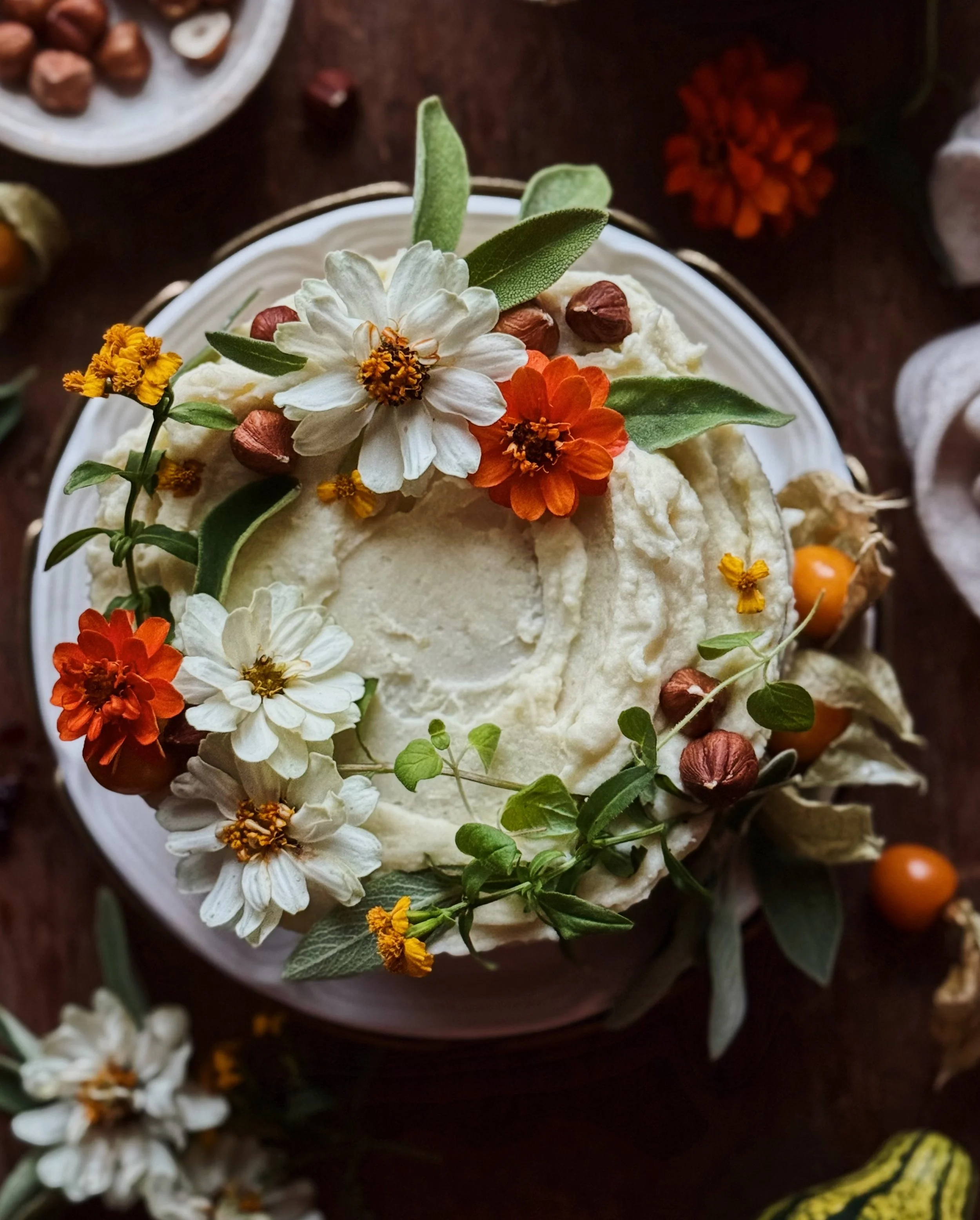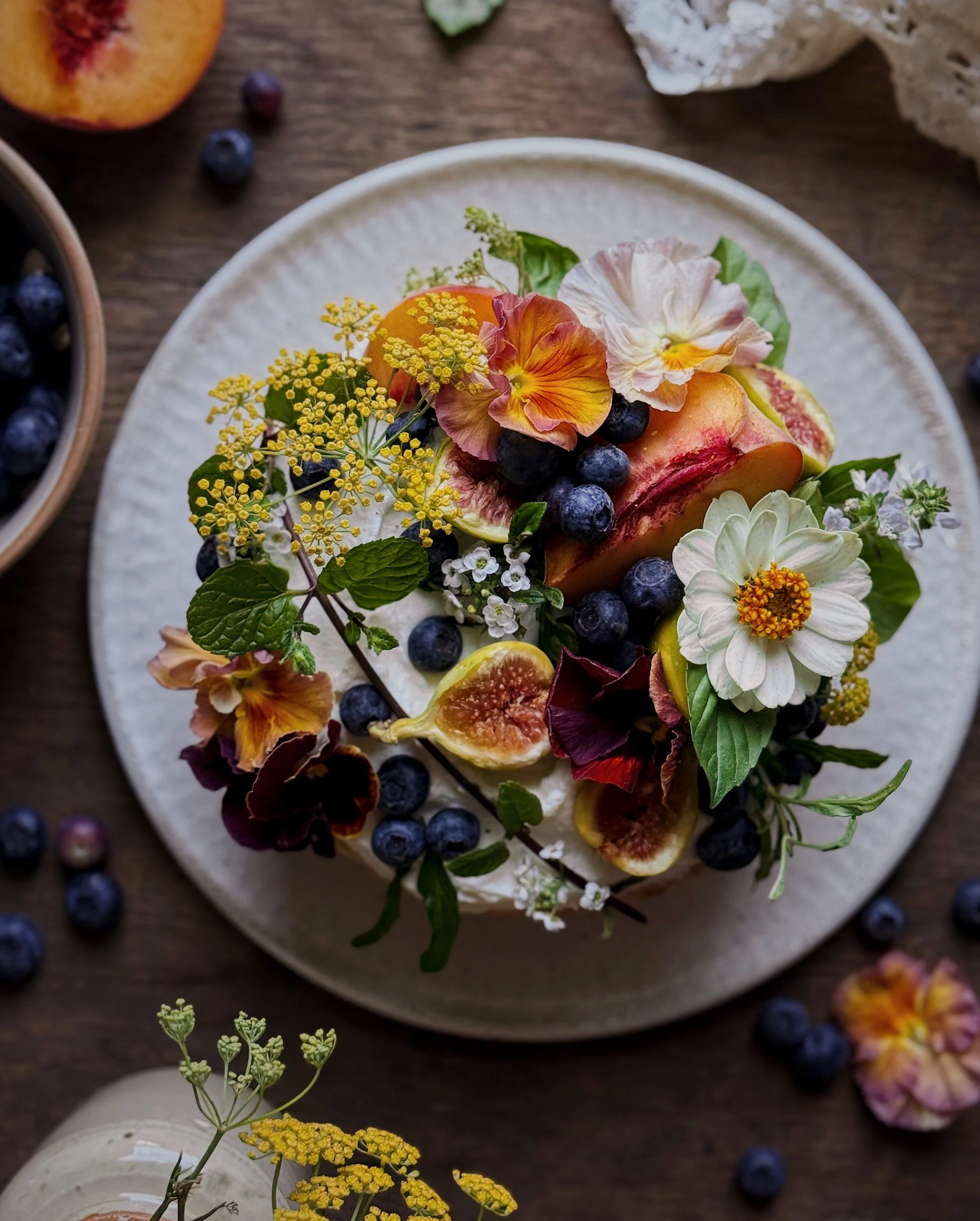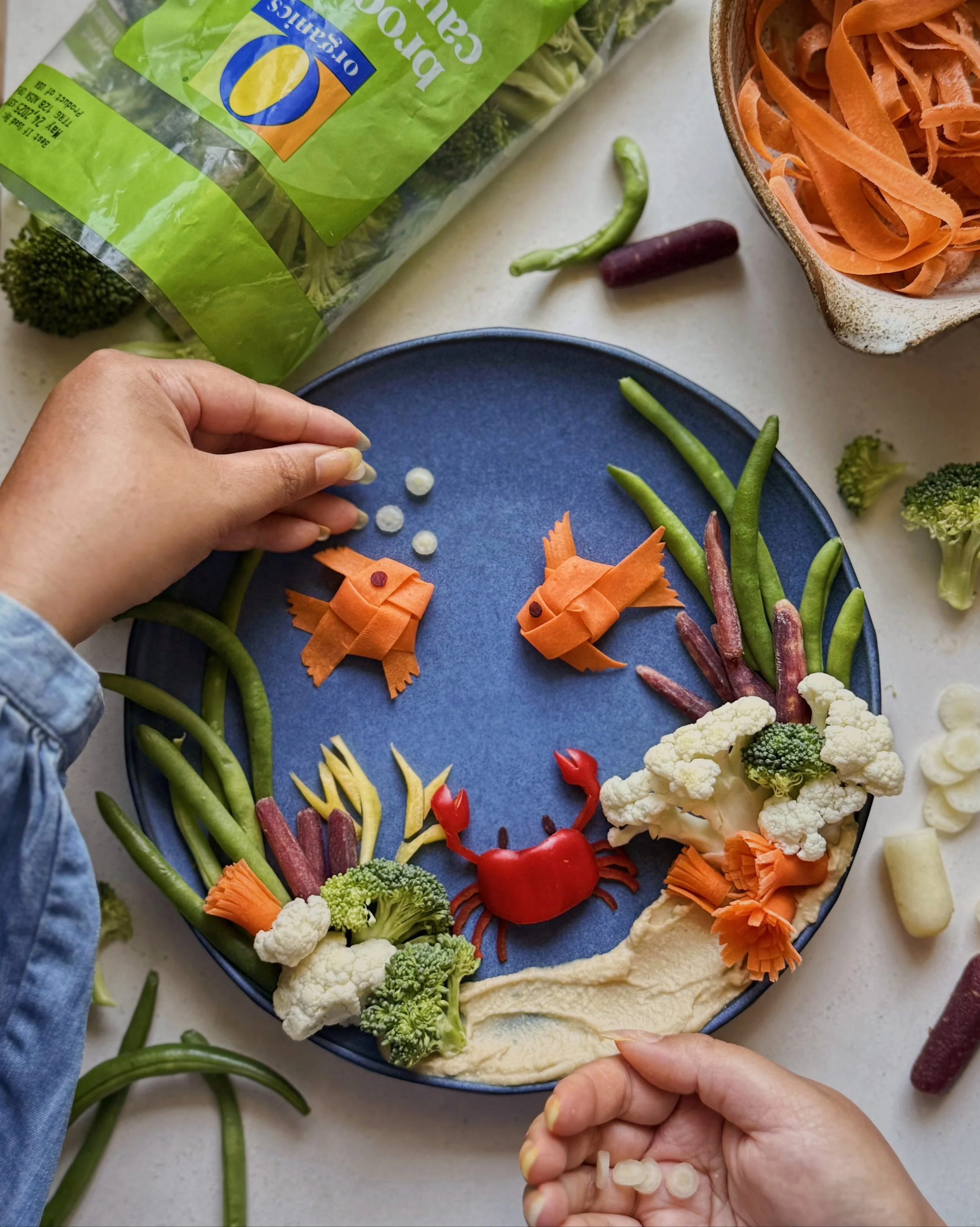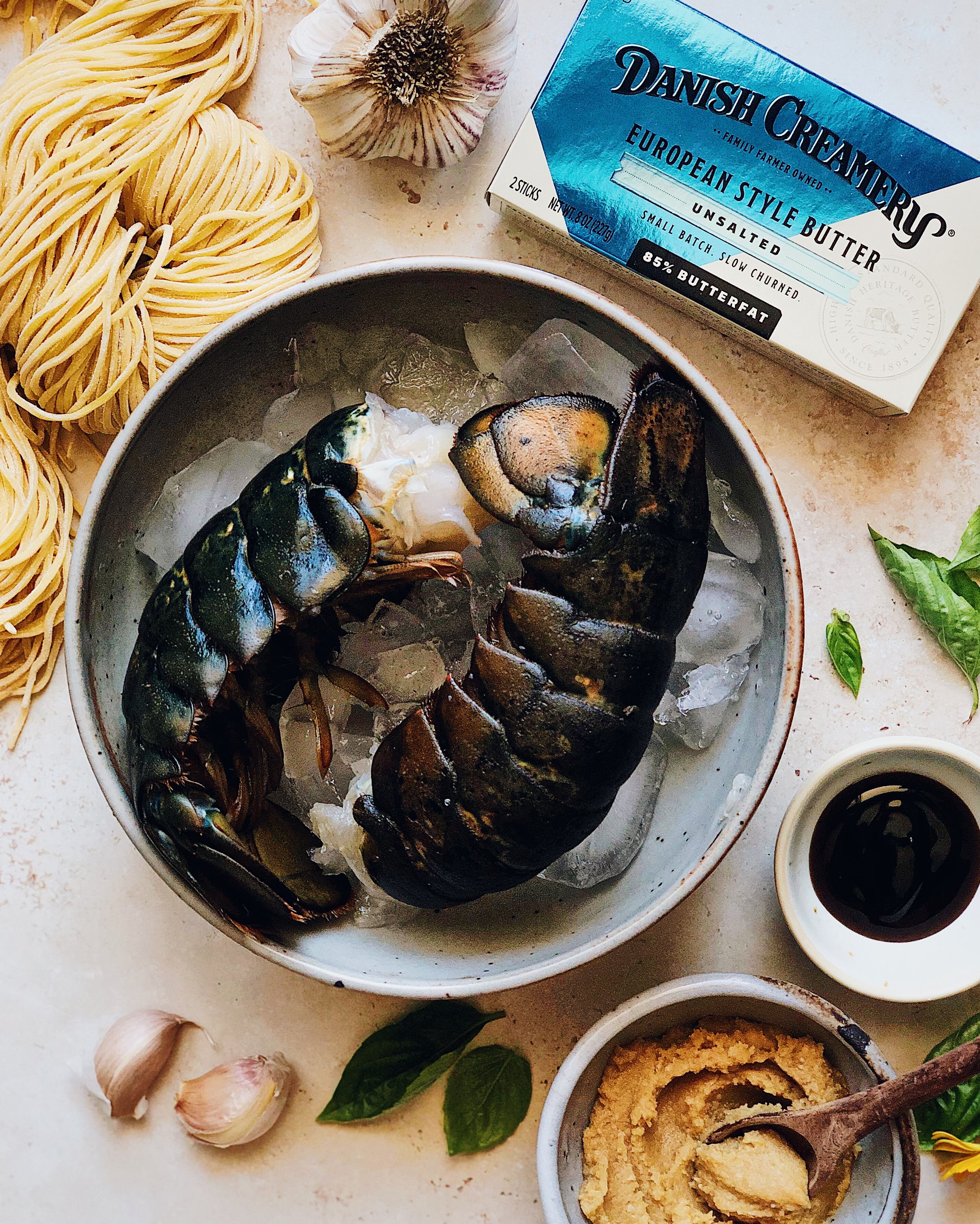Recipe: Miso Garlic Butter Noodles with Lobster Tails
/For this recipe, I partnered with Danish Creamery and created a dish that feels completely luxurious and indulgent, yet is actually simple and quick to make. A wonderful, umami-rich miso butter with a sweet undertone is infused with lots and lots of garlic and this forms the sauce that coats every strand of noodle before the whole lot is topped with pan-seared lobster tails slathered in the extra miso garlic butter. It’s good for when you want to make a home cooked meal that feels special but you don’t actually want to spend that much time on it.
This noodle recipe combines two amazing and easy Asian-American dishes: Vietnamese-American garlic noodles and Japanese-American miso butter pasta. I make a lot of fusion food because often when I think about what I feel like cooking, I think of two things I’m craving and then explore what it would be like to combine them. And when I realized how well these dishes would overlap, it was way too obviously meant to be to pass up.
Garlic noodles were actually invented by a Vietnamese chef right here in San Francisco and it was one of the first dishes I had after moving in to the city over 10 years ago (though not at the original restaurant). At the time, I was still terrified of driving downtown and still not all that into Asian food; I was still in my phase of wanting to binge on all the Western foods I didn’t get to have very much of when I was growing up. But my new landlady at the time recommended a Vietnamese restaurant right in our neighborhood and I fell in love with their garlic noodles. I think that was really a turning point in my exploration of food—especially Asian x Western fusion food.
This dish doesn’t require a whole lot of ingredients so it’s important that the ones that are in it are good. Ultimately the foundation for the sauce here is butter, and I used Danish Creamery European Style Unsalted Butter, which is slow-churned in small batches for a velvety texture and rich flavor. This extra time and extra care make the butter so extra delicious. As I folded it in with the mellow, slightly sweet miso, I knew things were gonna be good! And then allowing that miso butter to melt slowly over low heat with lots and lots of chopped garlic to get it infused with that garlic flavor—absolutely dreamy!
Here are some notes about the short list of key ingredients you’ll need to make this dish:
White Miso: White miso is the most mellow and mild of the types of miso you would find at a specialty foods store or Asian supermarket. It is made of fermented soybeans like other misos but also has rice and barley. It’s important to use the right miso here as the mellowness and sweetness of white miso is what you want to make that subtle but luxurious miso butter. I would not recommend substituting other types of miso, which may be too salty.
Butter: This recipe utilizes Danish Creamery European Style Unsalted Butter and the starchy water from parboiling the noodles to create a very simple emulsified sauce for the noodles. Danish Creamery’s European Style butters contain 85% butterfat (which is more than most other European style butters) and that’s what helps make the sauce for this recipe rich and dreamy.
Garlic: This isn’t one of those recipes that just uses a couple cloves of garlic! When I say “garlic noodles” I mean it. This recipe uses a whole head of garlic—about 10–12 cloves—and gently infuses garlic flavor into the miso butter over low heat before the whole mixture is tossed with the noodles to coat them. Don’t worry about chopping them up super fine, I think being able to see the bits of chopped garlic is welcomed in this dish.
Noodles: I used fresh Chinese style enriched egg noodles to make this dish. These noodles come in the refrigerated section of Asian supermarkets and they only need to be parboiled very quickly in boiling water to rinse off the excess starch before they can be incorporated into a stir fried noodle dish like this. You could definitely also use spaghetti; in that case I recommend cooking it until about 1 minute short of al dente.
I got the idea to top my miso garlic butter noodles with lobster from a night market that pops up in the SF Bay Area; one of the stalls served up a split open lobster on garlic noodles but I don’t really understand how you’re supposed to eat it with no shell cracker and when you’re at an event where most people eat standing. So instead of getting it there, I created my own version that I could enjoy in the comfort of my own home. I opted to just use lobster tails because I thought they’d be much less intimidating than working with a whole lobster; I wanted this recipe to be genuinely easy in hopes that you’ll try it!
Some alternative versions:
At the core of this recipe is delicious and easy miso garlic butter noodles! Feel free to leave out the lobster entirely, and the result will be a plate of the most flavorsome dream for lovers of carbs and garlic. Just reduce the amounts for the butter, miso, and garlic to about 75% if you decide to serve just the noodles alone.
You could also substitute shrimp in place of the lobster tails. Skip the step of parboiling the lobster and instead cook them in a hot pan on each side, just until they change color and start to curl. Follow the rest of the recipe as written, then add the shrimp after the noodles are coated in the sauce and give everything a few extra tosses.
How to Make Miso Garlic Butter Noodles with Lobster Tails
Ingredients
1 stick Danish Creamery European Style Unsalted Butter, softened to room temperature
1/4 cup white miso paste
2 6–7 oz lobster tails, fresh or completely thawed
10–12 cloves garlic (about 1 head), roughly chopped
3 tbsp oyster sauce
8–10 oz fresh Chinese-style thin egg noodles
Thai basil, for garnish (optional)
2 tbsp tobiko, or other fish roe (optional)
4 lemon wedges, for serving (optional)
Procedure
In a small bowl, combine the butter and miso paste and mix together until smooth and homogenous. Set aside.
Use a sharp pair of kitchen shears to split each lobster tail lengthwise.
Bring a large pot of water to a boil. Add the lobster tail halves and boil for about 3 minutes or until shells are bright red and meat has started to firm (they should not yet be cooked through). Pull them out of the boiling water and carefully pat away excess water with paper towels. Set aside to continue to dry off.
Add noodles to the boiling water and parboil for 1 minute, or according to package instructions. Reserve about 3/4 cup of starchy water before draining the noodles. Rinse noodles thoroughly in cold water to remove excess starch and prevent overcooking. Set aside to drain thoroughly.
Heat a large skillet or wok on medium heat. Add about a tablespoon of the miso butter mixture, swirl to coat the bottom of the pan, then add the lobster tails, cut side down. Sear for about 1 minute, or until lobster meat has some browning on the surface. Turn off heat, flip tails over, cover, and allow the residual heat from the pan to cook the lobster tails through, about 1–2 minutes. Remove them from the pan. If there is charred residue inside the pan, safely wipe it off using tongs and a damp paper towel.
Add the remaining miso butter mixture into the pan and set heat on low. Once it starts to melt, add chopped garlic. Cook garlic on low heat, stirring constantly to allow it to infuse the butter, for about 5 minutes, or until the edges of the garlic start to turn golden. Turn up the heat to medium-high; immediately add oyster sauce, stir to combine, then add noodles and about 1/4 cup of the reserved cooking water. Toss vigorously to combine, adding more water a little at a time if needed to help the sauce coat the noodles. Once sauce is distributed evenly, continue to stirfry until there is no longer excess water.
Use tongs to transfer noodles to a serving dish. Top with lobster tails, then scoop the remaining fried garlic mixture from the pan and spoon it on top of the lobster tails. If desired, garnish with Thai basil and scoop small mounds of tobiko over the lobster tails before enjoying immediately.
Thank you so much to Danish Creamery for sponsoring this recipe! Visit their website to learn more about their legacy of carefully-crafted Old World-quality butter made with milk from family farms since 1895.















